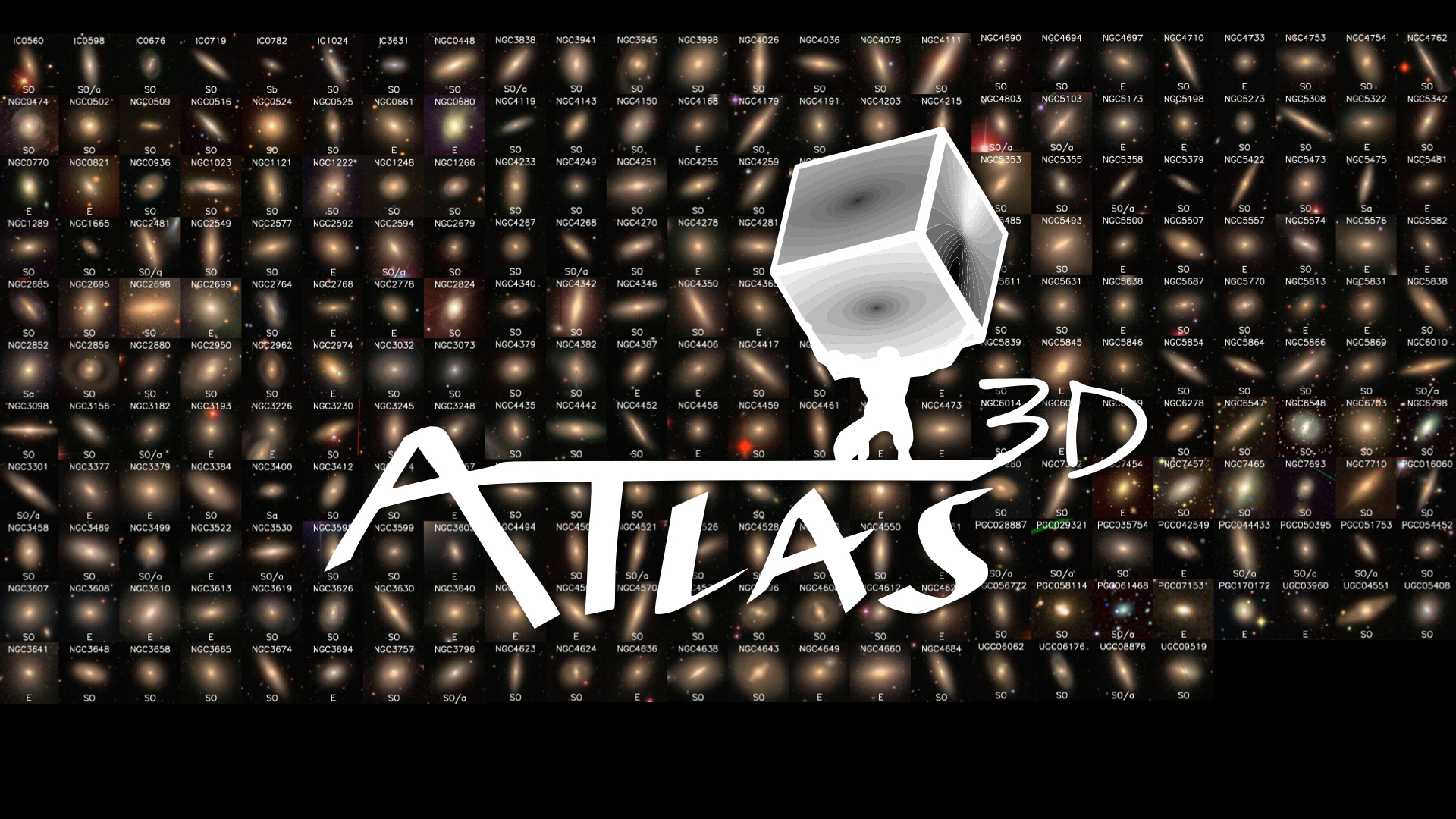Daily Image
11-02-2011There is no such a thing as a boring galaxy!
| Submitter: | Raffaella Morganti for the Atlas3D team |
| Description: | Early-type galaxies are generally perceived to be quite boring. At first glance, nothing is really happening, they do not show any interesting structure or features and they all sort of look the same. Nevertheless, a large international team, also involving ASTRON astronomers, is performing a detailed study of a large sample (called the ATLAS3D sample) of this type of galaxy. The team has collected not only optical integral field data (using the SAURON instrument at the WHT), but also deep optical images (MegaCam at the CFH telescope), CO data (IRAM 30m followed by PdBI and CARMA) and, last but not least, HI (using the WSRT, of course!). The team involves people from Oxford University, ESO, Saclay, UC, Berkeley, Lyon, Hertfordshire, Gemini, MPIA, Toronto. Paolo Serra, Tom Oosterloo and Raffaella Morganti are member of this collaboration and, in particular, they are taking care of the HI data. As a result of this large study, the picture people have of early-type galaxies will change. It turns out that, if you really look well, early-type galaxies are a very very varied family of objects with all sorts of interesting details that suggest that the origin and evolution of this class of galaxies is much more complex than what people initially thought. One of the main contributions of the WSRT data is that, unexpectedly, many galaxies show very interesting gas structures (about 50% are detected in HI) that indicate a still active assembly. Many of the early-type galaxies studied appear to be in the process of acquiring gas from outside and to form regular (disk) structures. In particular the HI data unambiguously show, for the first time, that very large amounts of dark matter surrond the galaxies. The team meets regularly and last year they have come to ASTRON. One year later, January 2011, the team met in Socorro, at the University of New Mexico, to discuss the status of the project, the results obtained, and the next steps to do. It was also an opportunity to "celebrate" the first success of this collaboration: 9 papers have been submitted in the last few months, four of them are already accepted and the rest is expected to pass that hurdle soon. The paper describing the HI data collected with the WSRT is also in good shape and will be submitted very soon. The HI data will also be important in the study of dark matter and some spectacular results have been obtained. The first paper describing the sample can be found in Cappellari et al. 2011 Monthly Notice of the Royal Astronomical Society, http://adsabs.harvard.edu/abs/2010arXiv1012.1551C |
| Copyright: | Atlas3D |
| Tweet |  |
